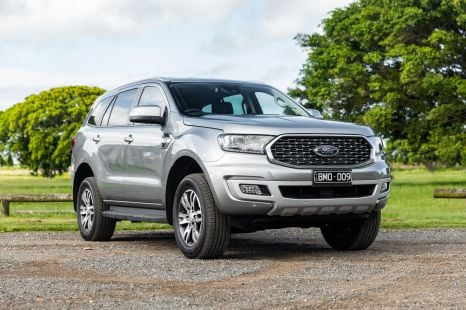

William Stopford
Ford Everest recalled
16 Hours Ago
Few vehicles embody the stereotypical Australian lifestyle like the Ford Everest, especially in Sport V6 guise.
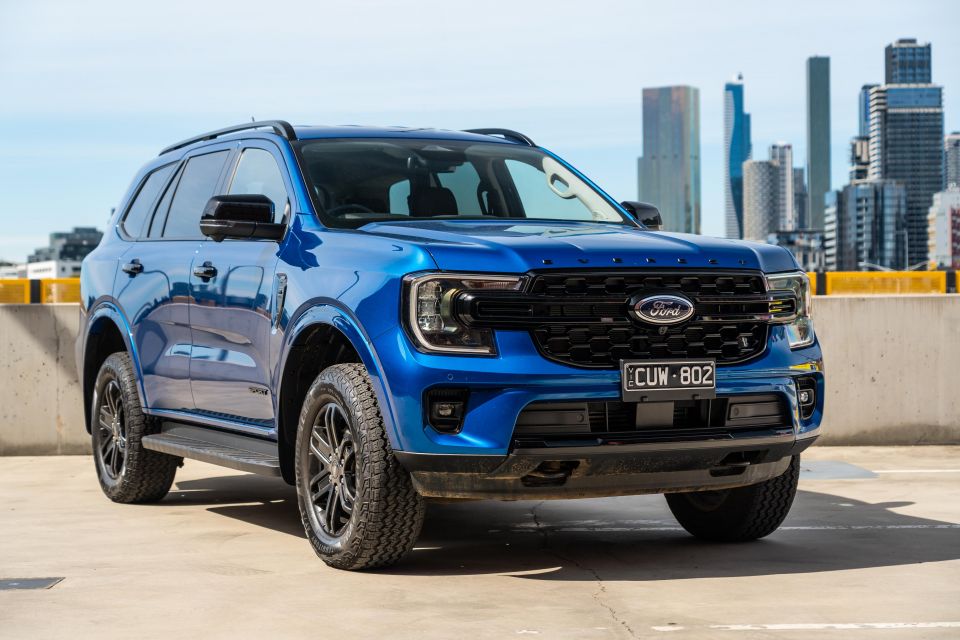


Quickly see how this car stacks up against its competition. Select any benchmark to see more details.
Where expert car reviews meet expert car buying – CarExpert gives you trusted advice, personalised service and real savings on your next new car.
Even in the face of stiffening competition and threatening emissions regulations, Ford continues to kick goals with its Ranger-based, locally developed Everest large SUV.
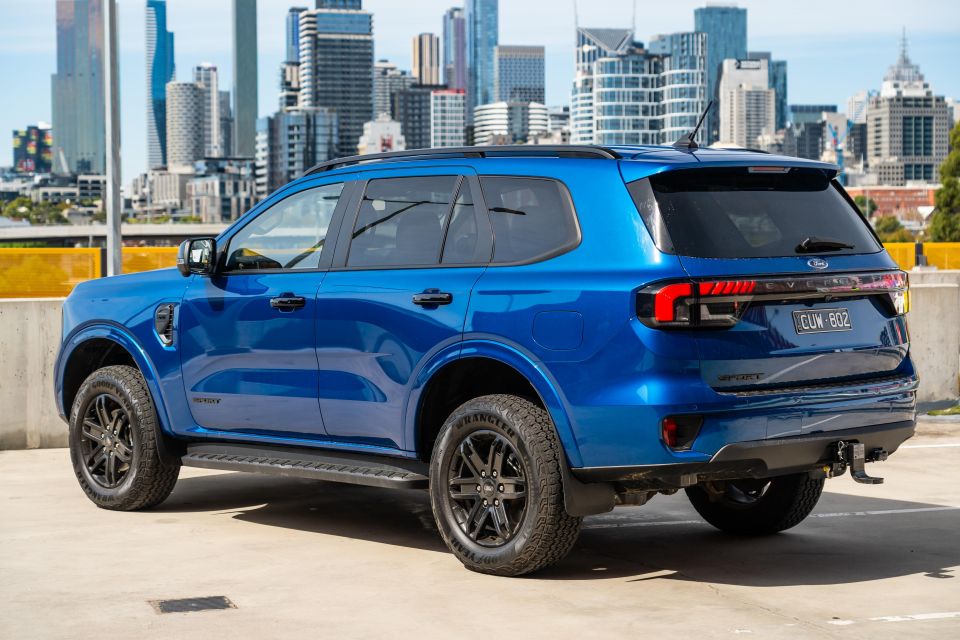
Recently named Australia’s best off-road SUV in the inaugural 2025 CarExpert Choice Awards, the Everest was the best seller in its segment last year and last month, and continues to easily be the Blue Oval brand’s second most popular model.
While the new-generation Toyota LandCruiser Prado has edged ahead of it in terms of deliveries so far this year, and could well reclaim the large SUV sales title it lost to the Everest last year when stock of the old model was exhausted before its successor arrived in late 2024, the Ford has ultimately proven to be more fit for purpose, and better value too.
Other worthy rivals include the Isuzu MU-X and GWM Tank 500, although neither comes close to the Everest from a sales volume standpoint.
So, if the media and buyers are coming to the conclusion that Everest is best, the question becomes… which one? With that dilemma in mind, is the cheapest V6 Everest the best of a bloody good bunch? Read on to find out.
The Sport V6 is among the more expensive variants in the Everest range, commanding a list price of $75,540 before on-road costs.
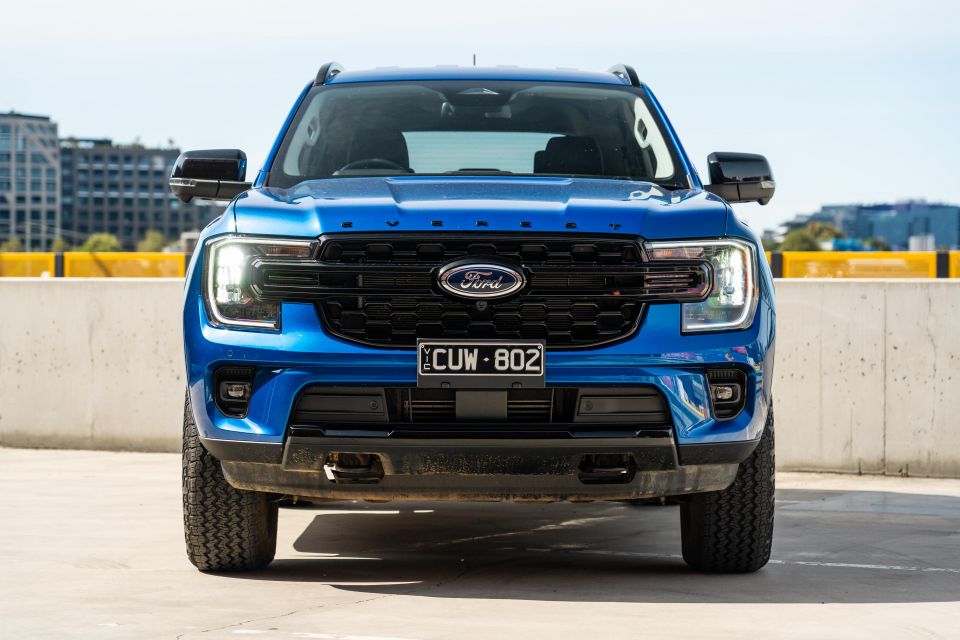
| Model | Price before on-roads |
|---|---|
| 2025 Ford Everest Ambiente 4×2 bi-turbo | $54,490 |
| 2025 Ford Everest Ambiente 4×4 bi-turbo | $59,490 |
| 2025 Ford Everest Sport 4×2 bi-turbo | $63,990 |
| 2025 Ford Everest Trend 4×4 bi-turbo | $67,290 |
| 2025 Ford Everest Sport 4×4 V6 | $75,540 |
| 2025 Ford Everest Tremor 4×4 V6 | $77,490 |
| 2025 Ford Everest Wildtrak 4×4 V6 | $77,490 |
| 2025 Ford Everest Platinum 4×4 V6 | $82,390 |
To see how the Ford Everest lines up against the competition, check out our comparison tool
Buy your new car without the stress. It's fast, simple and completely free.

Great service from Travis and team, second time I have used this business would not hesitate to recommend them to anyone
Craig C.
Purchased a Ford Ranger in Sunshine Coast, QLD
CarExpert helped Craig save $7,224 on his Ford Ranger, now let us save you on your next new car.
Get your BEST priceCompared to lower-spec versions of the Everest, the interior of the Sport remains workmanlike with a few choice upgrades to enhance comfort.
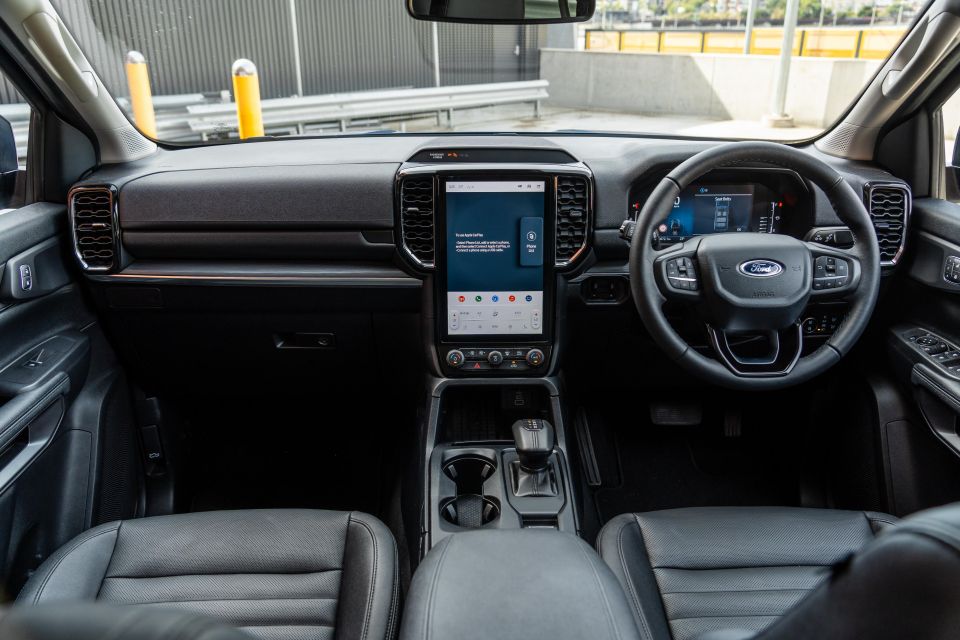
Hard black plastic still features heavily on the door cards and dash, but the Sport brings leather-accented front seats with heating and ventilation, which I found particularly useful given Melbourne’s unpredictable weather.
The front pews are supremely comfortable too, and that’s hardly surprising – if Ford does anything well, it’s seats. Drivers of all shapes and sizes can settle into the wide, plush base cushion without issue, and there’s ample adjustability available. Electric, of course.
The steering wheel is also allegedly trimmed in leather, but the fact that I mistook the stuff for plastic suggests it’s not of the highest quality. At least the wheel tilts and telescopes to help you find the perfect driving position.
Padded armrests on either side also allow you to take on a more relaxed position when appropriate.
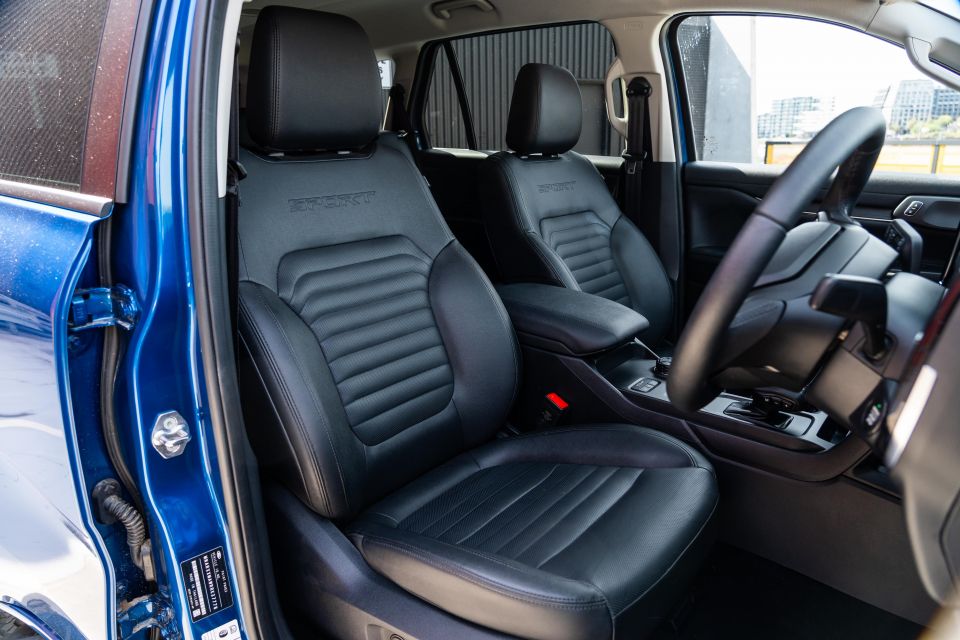
Behind the steering wheel you’ll find an 8.0-inch digital instrument cluster, which is very configurable, if a bit small for such a big vehicle. Paying up for the Platinum nets you a 12.4-inch unit, but the base version is nonetheless functional, offering easy access to key information like speed, fuel economy, and driving range at the push of a button.
Functionality aside, the Sport’s driver display is trumped by more modern systems, especially those fitted to more premium offerings in the large SUV segment. There’s no head-up display, either.
The Sport may be lacking in this department, but it doesn’t miss out on Ford’s premier 12.0-inch SYNC4 infotainment touchscreen.
Split horizontally into two sections, the vertical system is both intuitive and packed with nice-to-haves like native navigation, a dedicate off-road display, and wireless smartphone mirroring.
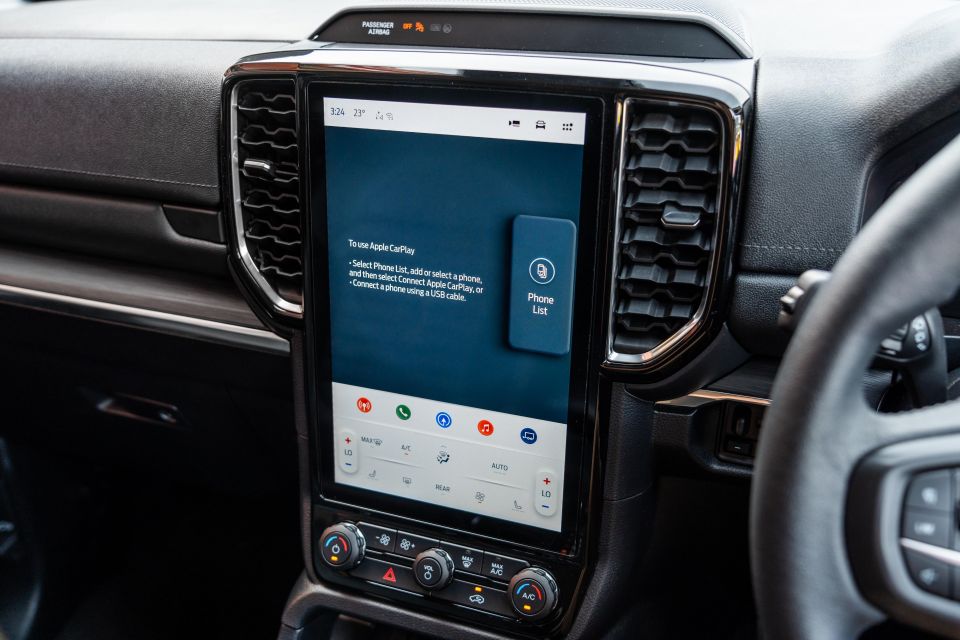
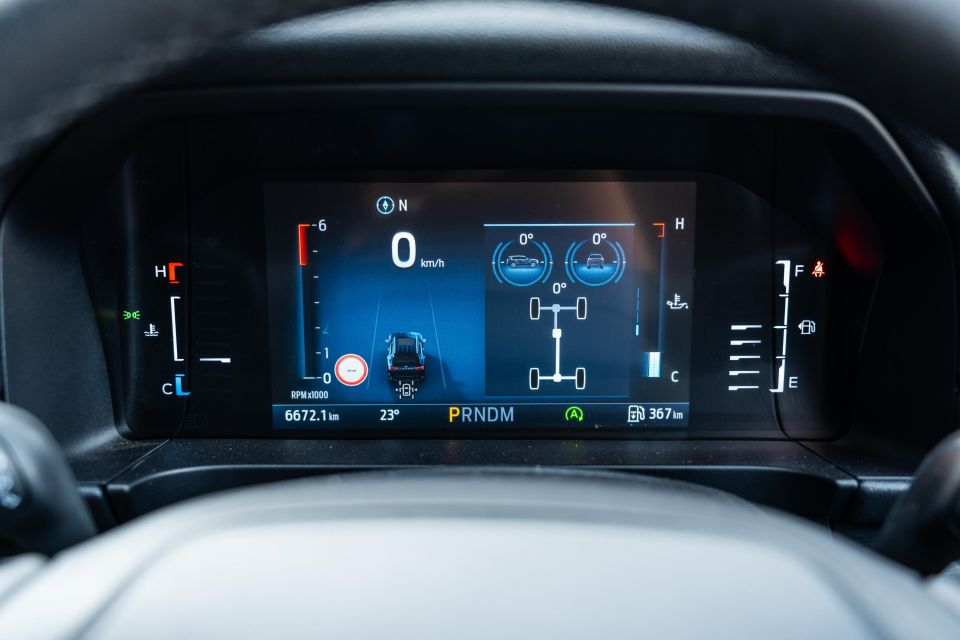
The visuals are bright and clear, while the blue and white colour palette is inoffensive. A host of helpful shortcuts are fixed to the bottom section of the screen, all linked to commonly-used functions.
This layout makes it easy to adjust temperature, fan speed, and the seat heater/cooler functions without trawling through several sets of menus.
Climate controls are split between the screen and a physical strip of buttons and dials below – again I ask, why not just put it all in the one place? You’ll quickly forgive that quirk.
Navigating through the infotainment menus is a breeze, although I tended to take advantage of wireless Apple CarPlay. Replenishment of mobile devices is taken care of by a wireless charging pad under the centre stack, and a pair of nearby USB outlets. A 12V power source can also be found in the centre console.
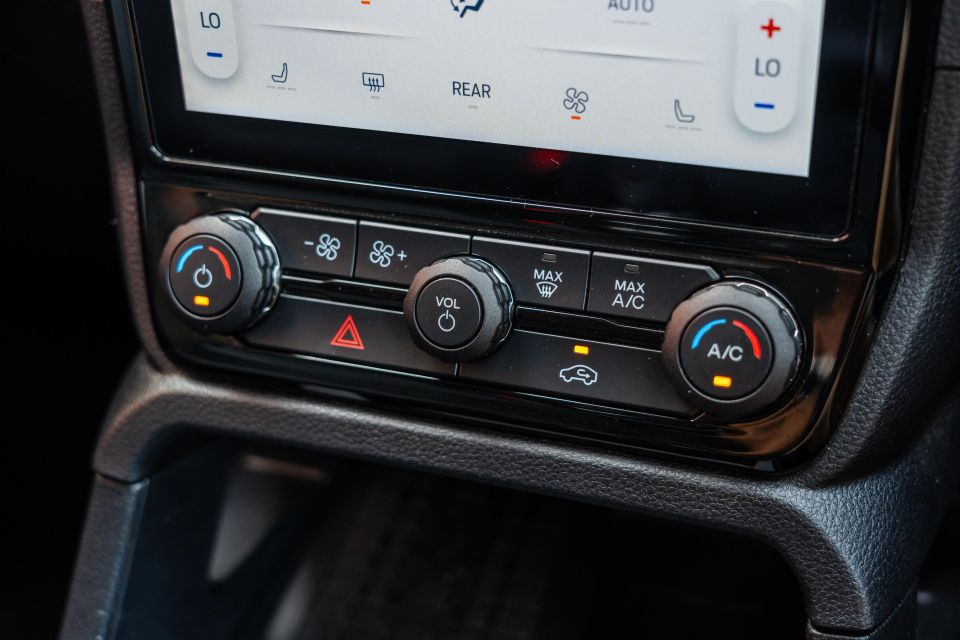
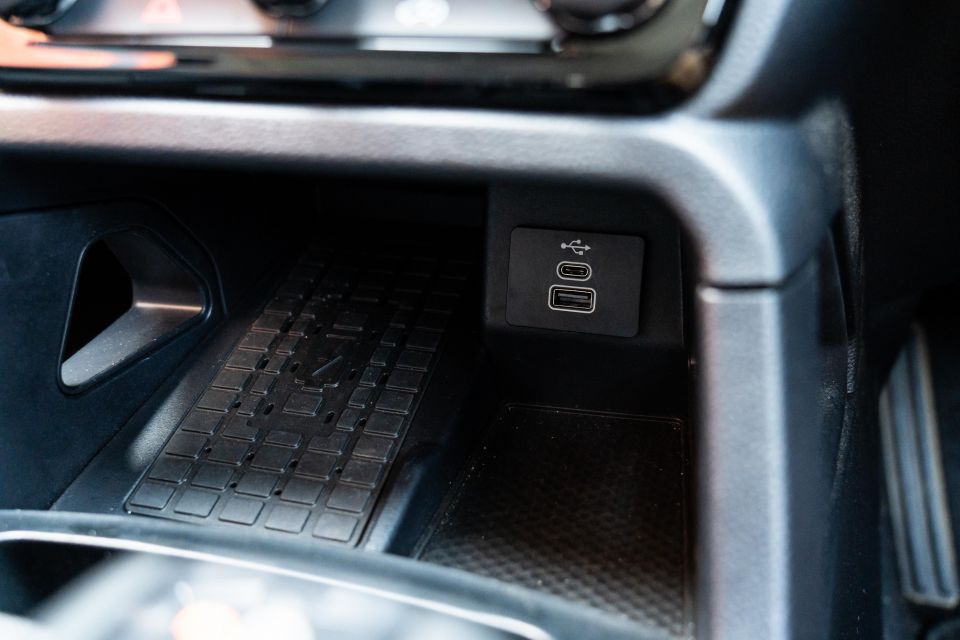
Cabin storage is also in strong supply. The door bins are on the narrow side, but the opposite can be said of the centre console and glovebox. There’s an additional storage tray directly above the glovebox, as well as dash-mounted cupholders and an overhead compartment for sunglasses.
So, front occupants are well catered for, but what about those in the second row? Surprisingly, it’s not as spacious back there as you might think.
Legroom isn’t fantastic, even with the sliding bench in its rearmost position – I found my knees pressed up against the seat back when sitting behind my admittedly abnormal driving position. The tight gap under the front seats isn’t particularly kind on big feet, either.
However, headroom is ample, meaning folks who are taller in the torso won’t struggle to get comfortable. The inclusion of a reclining mechanism for the rear bench improves comfort and headroom further, while a pair of large windows let plenty of natural light into the cabin.
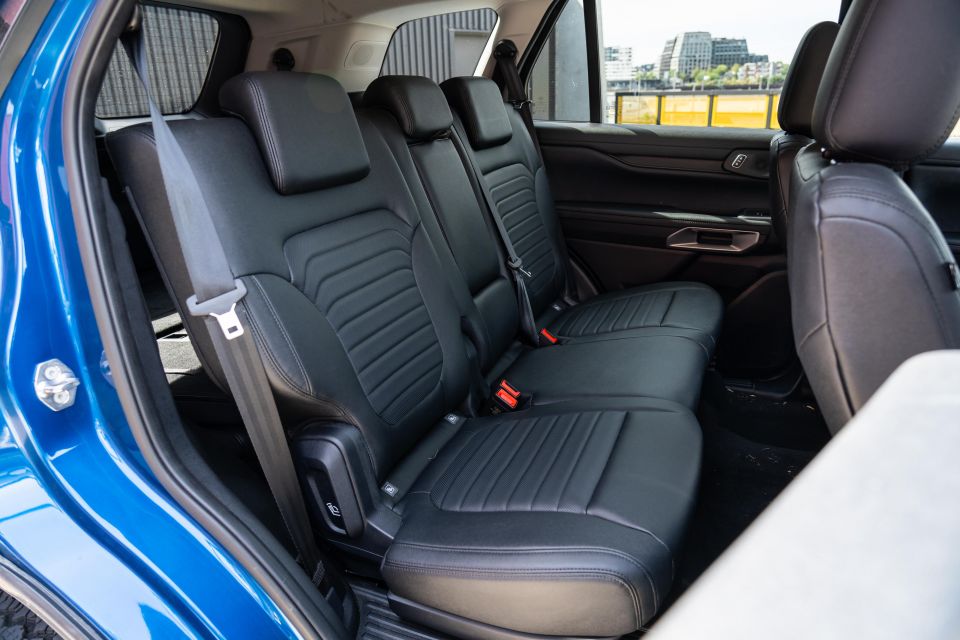
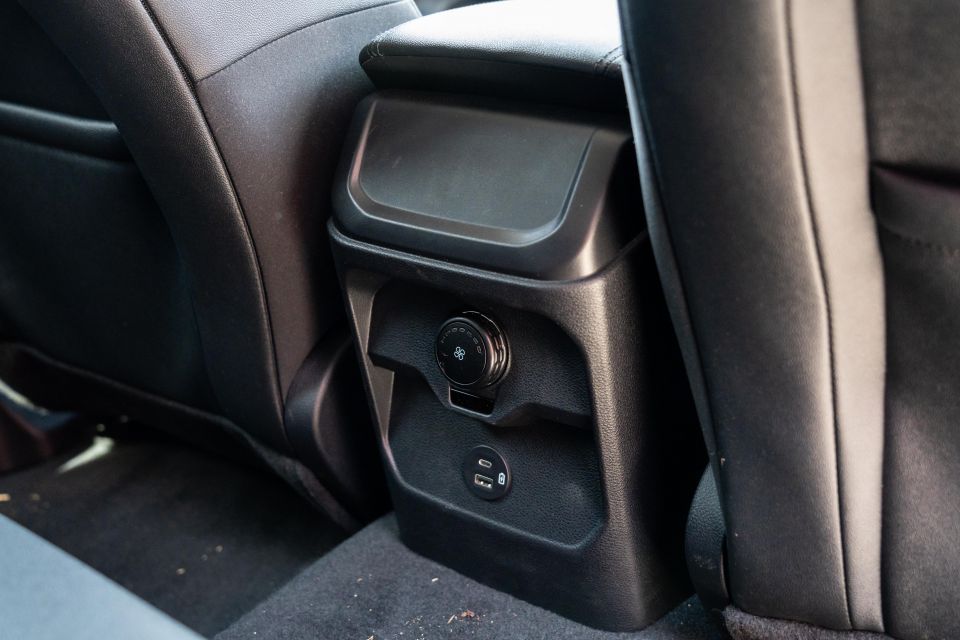
As far as amenities go, second row passengers can expect both USB-A and USB-C outlets, ceiling air vents, map pockets behind the front seats, decent door bins, and a centre armrest with pop-out cupholders. It’s far from a spartan space, and definitely more welcoming than the third row.
On paper, the Everest offers seven usable seats, but the ‘back-back’ isn’t particularly adult-friendly. Legroom depends on the position of the sliding second row, but even teenagers will be left wanting more. Passenger height is capped at five-ten. You do get cupholders and a 12V power outlet, though!
For those wondering whether the Toyota Prado is any better in this regard… it’s not. Both are best treated as five-seaters with an extra set for emergencies. It’s a little disappointing considering I had a better time in the third row of the Mahindra XUV700, a considerably smaller SUV.
At least the Everest has child safety covered – top-tether child seat anchors are present on all three second-row seats and both third-row seats.
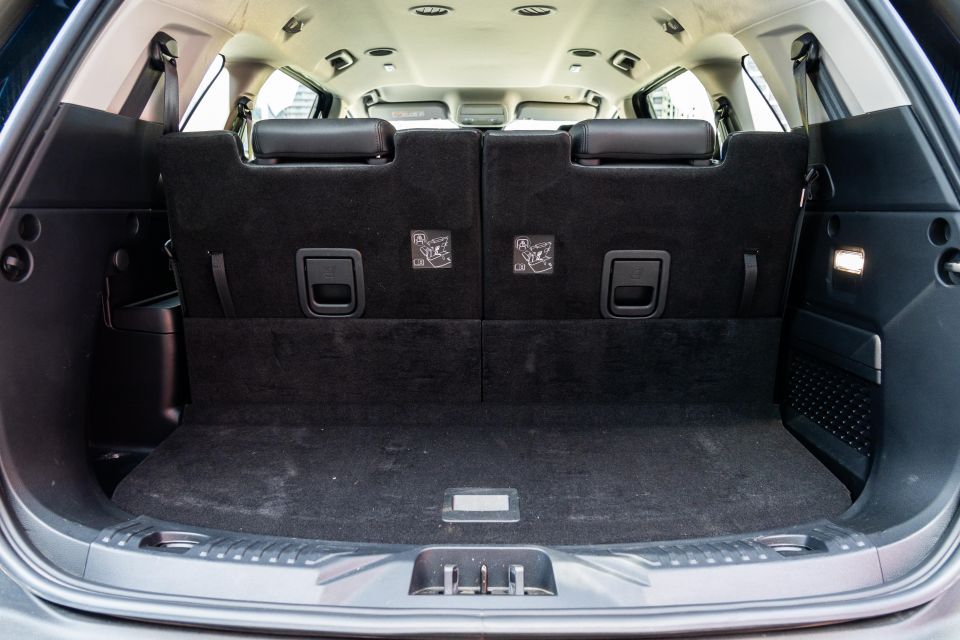
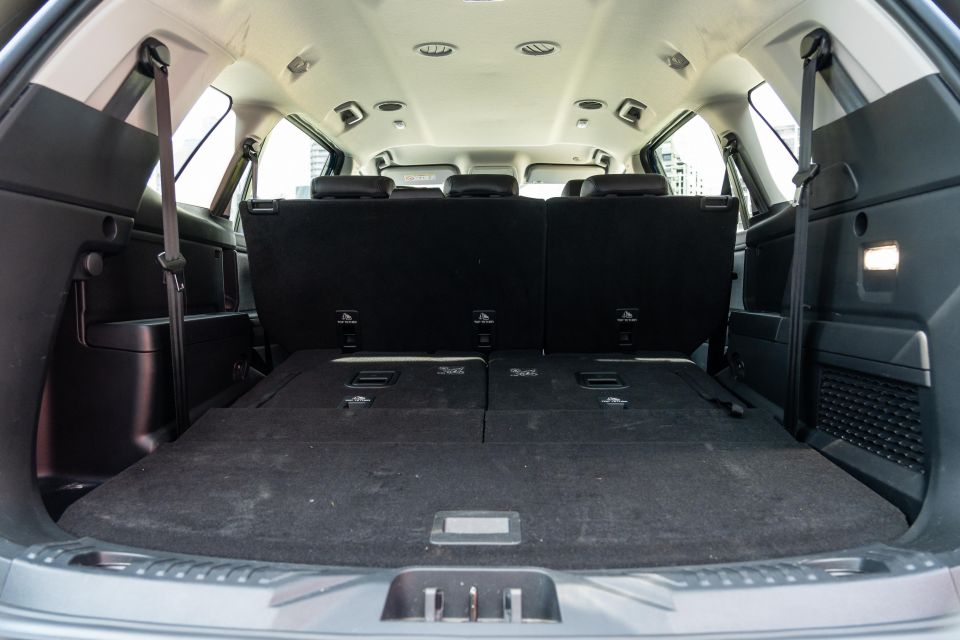
With all three rows of seating in place, the Everest offers 259 litres of boot space – 77L more than the Prado, but less than the MU-X. That expands to 898L with the third row folded down – more than enough cargo capacity for a Bunnings visit or weekend road trip.
The boot aperture is large and easily accessible via a powered tailgate, enabling safe loading of bulky items.
All versions of the Everest are equipped with a full-size spare wheel, in this case a 20-inch items which is located underneath the vehicle.
| Dimensions | Ford Everest Sport V6 |
|---|---|
| Length | 4914mm |
| Width | 2207mm |
| Height | 1842mm |
| Wheelbase | 2900mm |
| Cargo capacity | 259-898L |
To see how the Ford Everest lines up against the competition, check out our comparison tool
Our test vehicle came equipped with Ford’s 3.0-litre V6 turbo-diesel engine, mated to a 10-speed automatic transmission and full-time four-wheel drive.
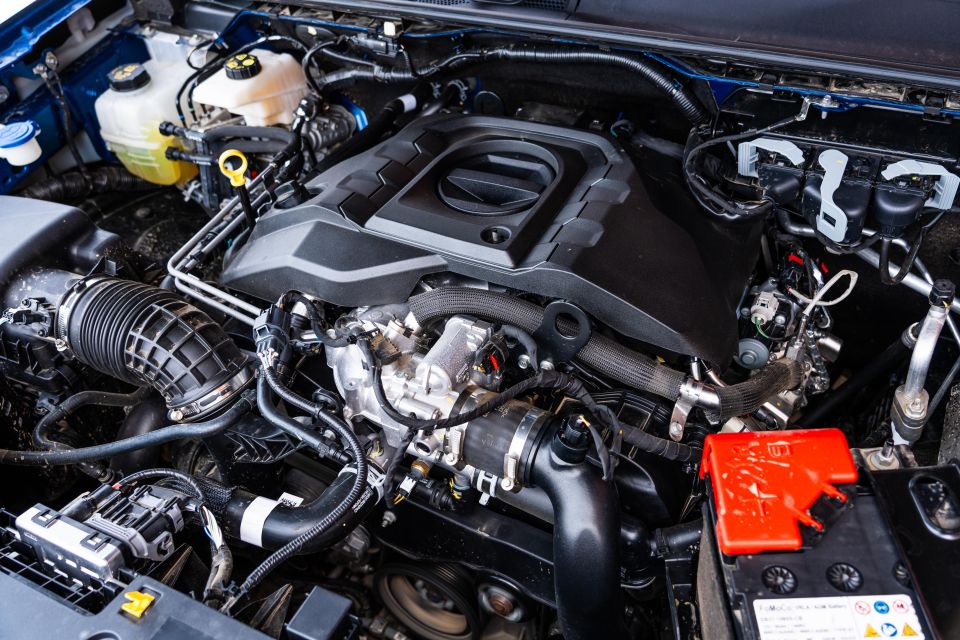
| Specifications | Ford Everest Sport V6 |
|---|---|
| Engine | 3.0L turbo-diesel V6 |
| Power | 184kW |
| Torque | 600Nm |
| Transmission | 10-speed automatic |
| Drive type | Full-time 4WD |
| Fuel economy (claimed) | 8.5L/100km |
| CO2 emissions (claimed) | 224g/km |
| Fuel tank | 80L |
| Weight | 2455kg |
| Payload | 703kg |
| Braked towing capacity | 3500kg |
| Gross vehicle mass (GVM) | 3150kg |
| Gross combination mass (GCM) | 6250kg |
To see how the Ford Everest lines up against the competition, check out our comparison tool
Few attainable large SUVs can match the Everest for all-round capability, and that’s especially true of V6, four-wheel drive versions.
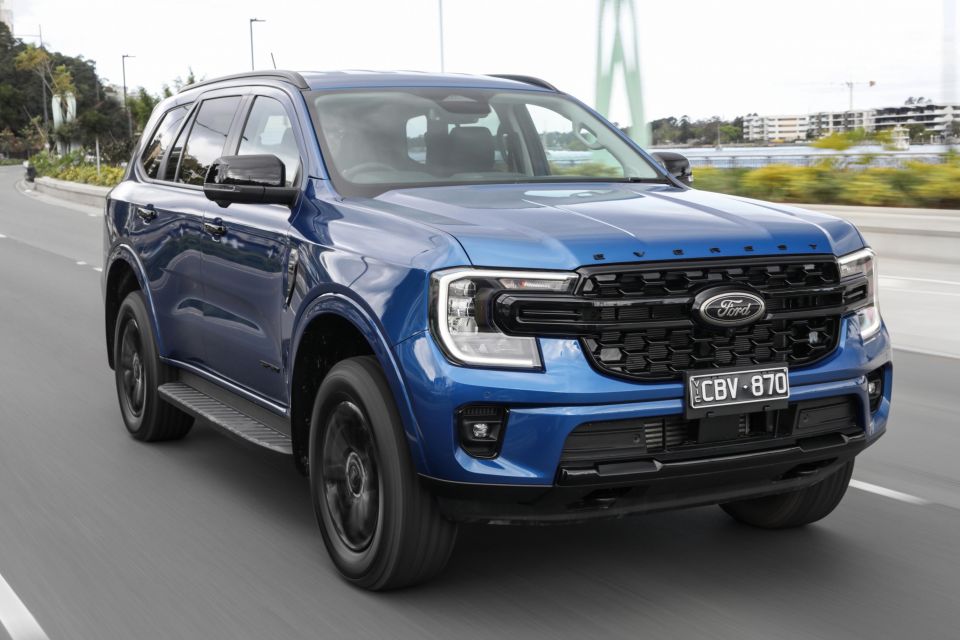
Around town, the Everest is easy to drive despite its hulking proportions, with excellent outward visibility and a light steering rack.
It takes up more lane than most vehicles on the road, but the Everest is manoeuvrable enough that it doesn’t feel like driving a bus.
The 3.0-litre turbo-diesel V6 fitted to higher-spec variants is an excellent fit, too, with enough torque to make this 2.5-tonne beast feel muscular at urban speeds.
That’s not to say the powertrain dominates the Everest experience, as it’s actually relatively anonymous most of the time. The engine isn’t particularly noisy at idle, and the 10-speed automatic transmission does a decent job of keeping the revs down.
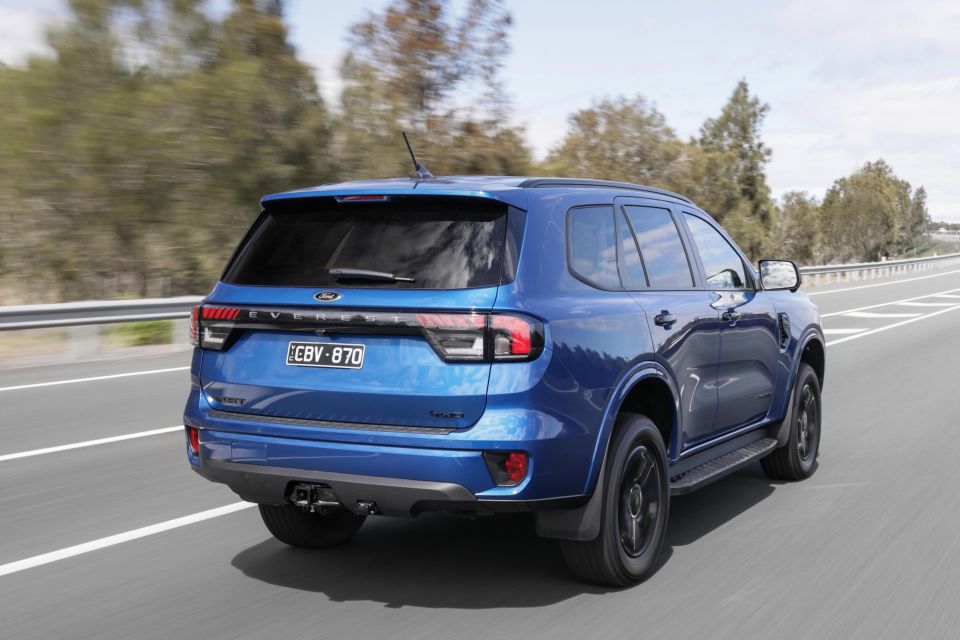
Throttle response is just about instantaneous, and power is delivered in a linear manner despite the use of forced induction. The Everest is a smooth operator, especially by the standards of big, diesel SUVs.
Speaking of smoothness in the city, the Everest comes with automatic start/stop and auto-hold functions to minimise fuel consumption and ease the driving load.
Having said that, I found the brake pedal to be a little grabby, lacking the progressiveness one might hope for in their family wagon. Parking can also be tricky given the size of the vehicle.
Ride comfort is a strength – the Everest is softly sprung, offering plenty of suspension travel and well-sorted damping that smooths out small ruts in the road.
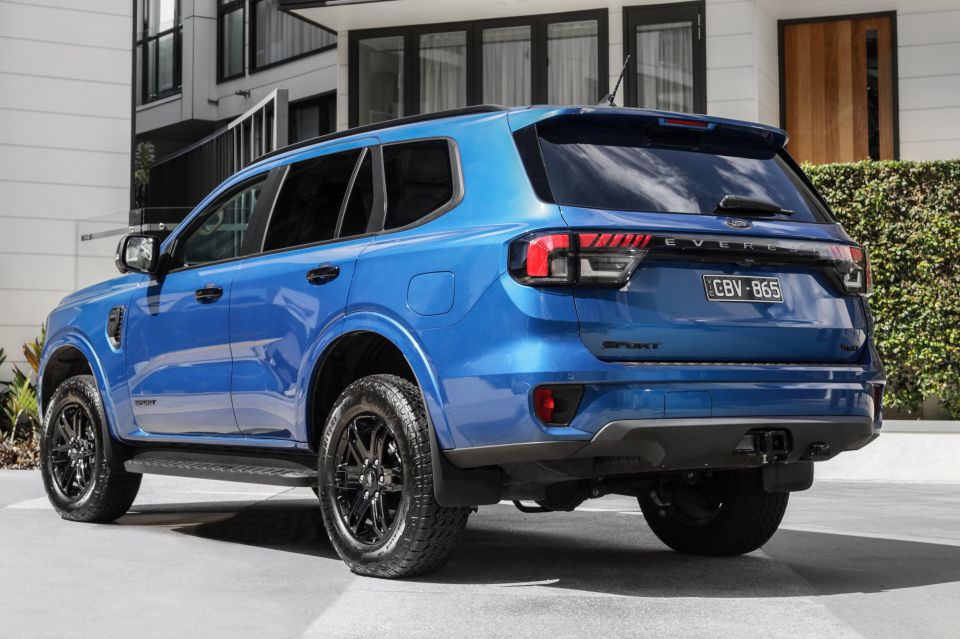
It is based on a ute platform though, which means you sometimes experience the rocking sensation associated with body-on-frame vehicles. There’s also an abundance of body roll, so the Everest shouldn’t be driven with any vigour.
Unibody seven-seaters have the Everest covered in the handling department for these reasons. Our tester was shod with Wrangler all-terrain tyres, rubber that’s better suited to off-roading than carving up country roads.
Indeed, the Everest isn’t a vehicle you buy for spirited driving – there’s plenty of weight for it to deal with, the dynamics are relatively sloppy, and the brakes are a bit undercooked.
However, it feels at home on the highway. A wave of torque carries you right up to our national speed limits, and the Everest holds those speeds without fuss. It’s a supreme towing machine, with a braked capacity of 3500kg and optional extras like a virtual towing assistant and integrated brake controller.
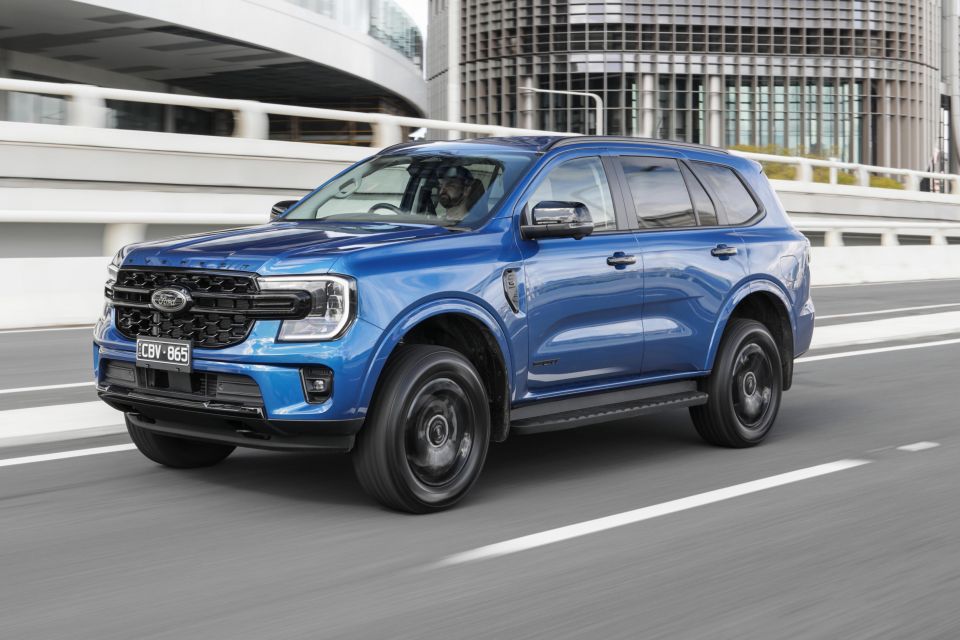
Where expert car reviews meet expert car buying – CarExpert gives you trusted advice, personalised service and real savings on your next new car.
Tyre roar is surprisingly lacking despite the fitment of noise-prone all-terrain rubber, and general NVH (noise, vibration, and harshness) levels are impressive for the segment.
Adaptive cruise control with lane centring makes the standard equipment list, although the system can be slow to react to changes in the flow of traffic, whether that’s due to the Everest’s heft or how the tech is calibrated. It’s still nice to have, though.
As are blind-spot monitoring, driver attention monitoring, and lane departure warnings, all of which serve to assist rather than annoy. That’s right, no bing-bong nonsense here.
Regardless, the Everest can’t match the road manners and refinement of alternatives like the Mazda CX-80 or Hyundai Palisade, but it can venture to places that those vehicles simply can’t.

In this specification, the Everest offers proper four-wheel drive with a 4A mode, an array of clever off-road tech, and a torquey powertrain that’s more than able to haul this big beast out of sticky situations. I didn’t get the chance to experience the Everest’s off-road talents during our week-long test, but its performance in our 2023 4WD Mega Test is telling.
Founder Paul Maric said: “[It] walked through the offset moguls in 4A mode, smartly shuffling torque to the grounded wheels to drag the car out. It was the same situation in 4H with the rear differential unlocked, and the car set to Mud/Ruts mode”.
“The Everest did touch down slightly, indicating it had less ground clearance than some of its rivals… the Everest V6 did an impressive job shuffling torque around to climb Mogul Mountain with a constant throttle.
“Ford’s hill descent control is the best in the business, allowing the driver to adjust speed using the cruise control buttons. The lack of ugly noises from the brakes is also impressive.”
| Off-road dimensions | Ford Everest Sport V6 |
|---|---|
| Track front and rear | 1620mm |
| Ground clearance | 229mm |
| Approach angle | 30.2 degrees |
| Departure angle | 25.0 degrees |
| Ramp breakover angle | 21.9 degrees |
| Wading depth | 800mm |
To see how the Ford Everest lines up against the competition, check out our comparison tool
As mentioned above, the Sport no longer gets a 10-speaker sound system. However, it still comes with a long list of standard equipment.

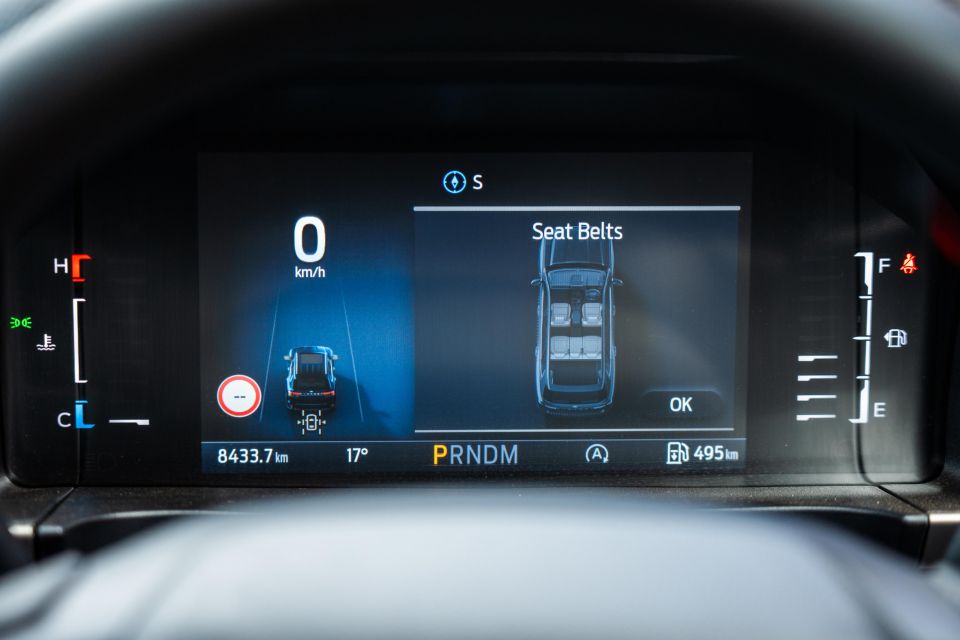
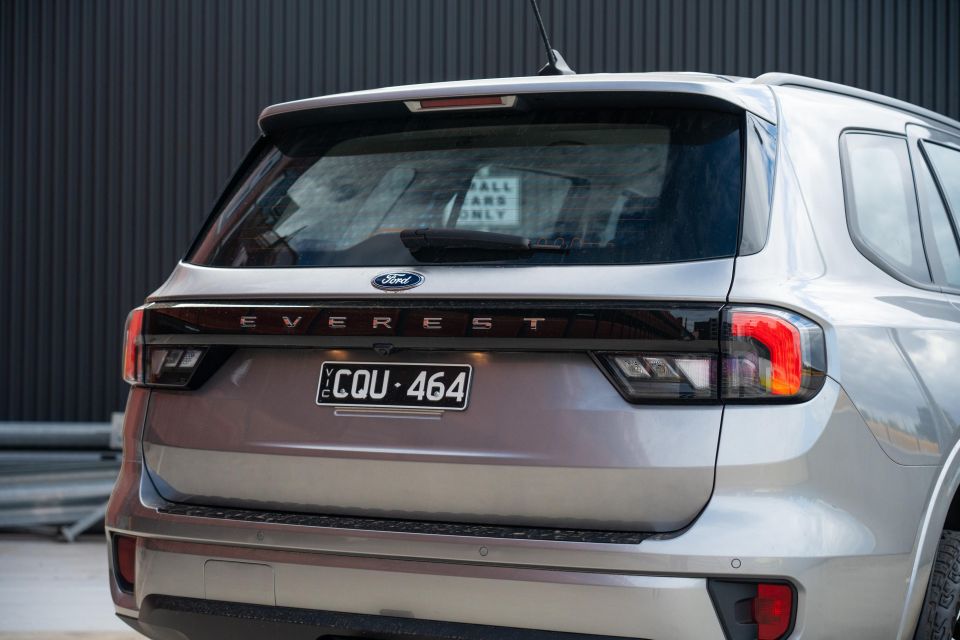

2025 Ford Everest Ambiente equipment highlights:
Everest Trend adds:
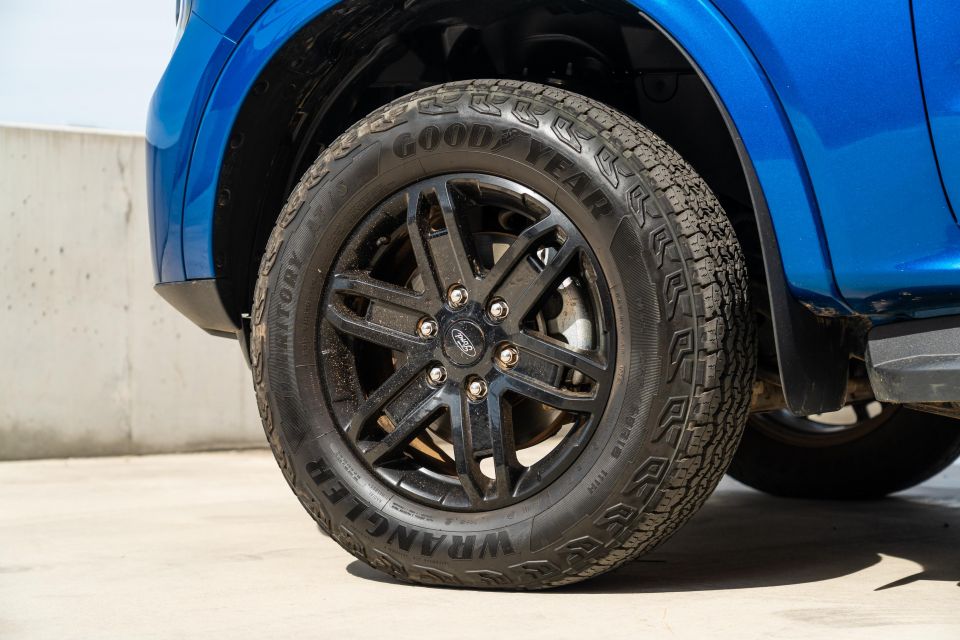

Everest Sport adds:
Everest Wildtrak adds:
Everest Tremor adds:
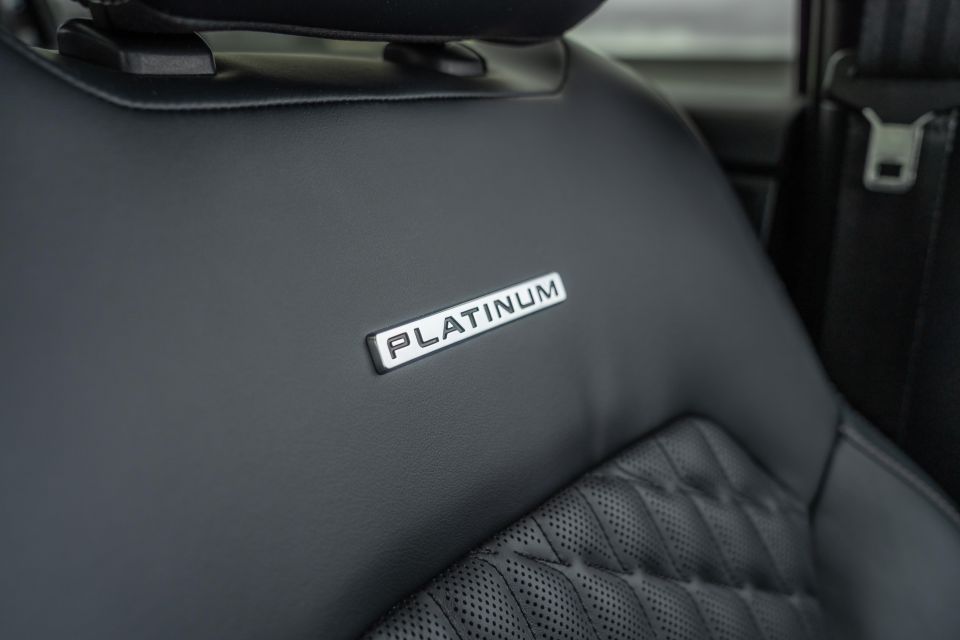
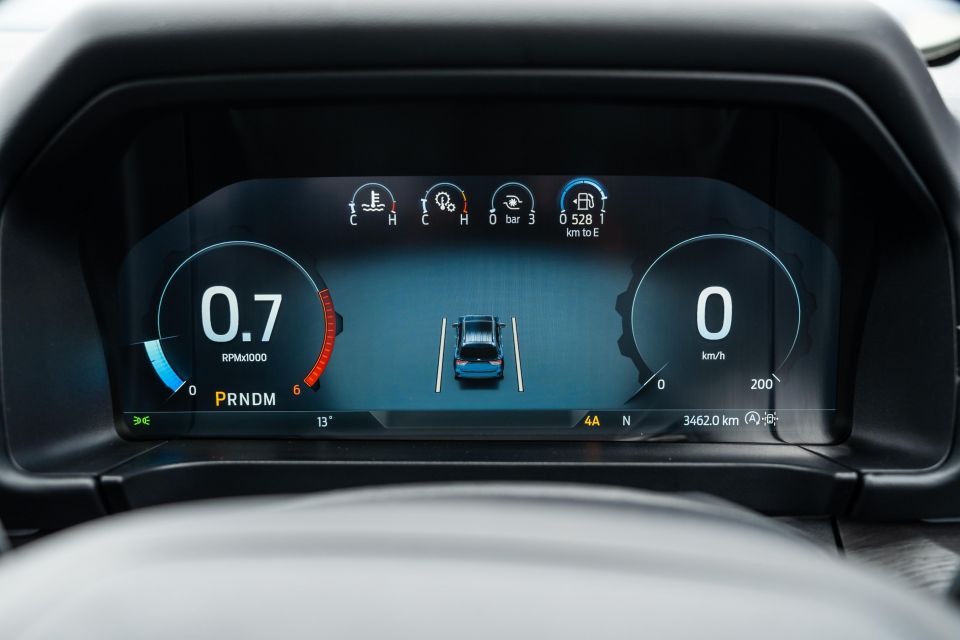
Everest Platinum adds (over Sport):
To see how the Ford Everest lines up against the competition, check out our comparison tool
The Ford Everest wears a five-star ANCAP safety rating based on 2022 testing on the related Ranger ute.
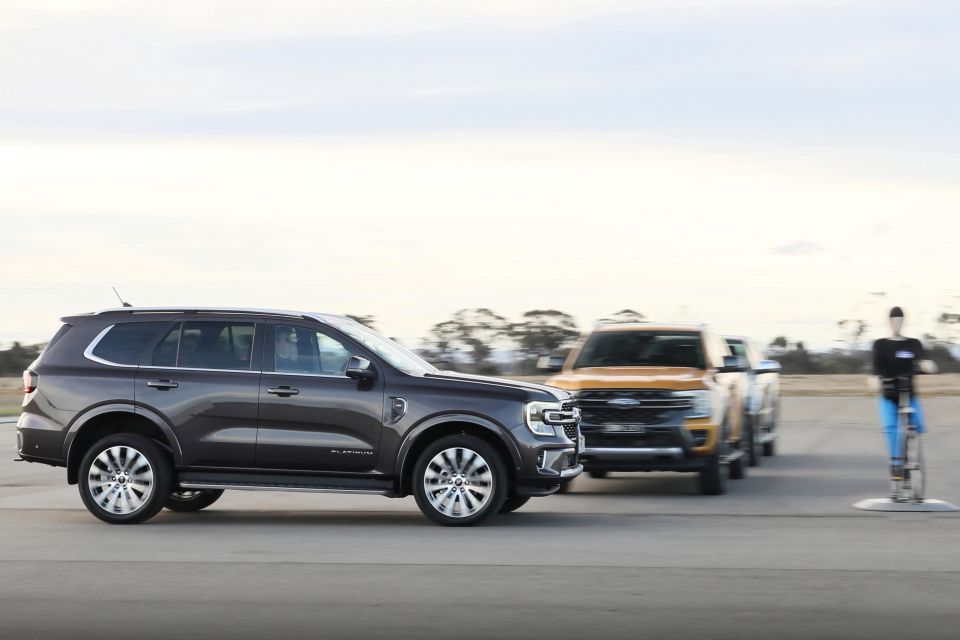
| Category | Ford Everest |
|---|---|
| Adult occupant protection | 86 per cent |
| Child occupant protection | 93 per cent |
| Vulnerable road user protection | 74 per cent |
| Safety assist | 86 per cent |
Standard safety equipment includes:
It’s worth noting that the Everest Tremor is ‘unrated’ when fitted with the optional Rough Terrain Pack, due to the differences between the front bumpers.
To see how the Ford Everest lines up against the competition, check out our comparison tool
As with the wider Ford lineup, the Everest is covered by a five-year, unlimited-kilometre warranty.
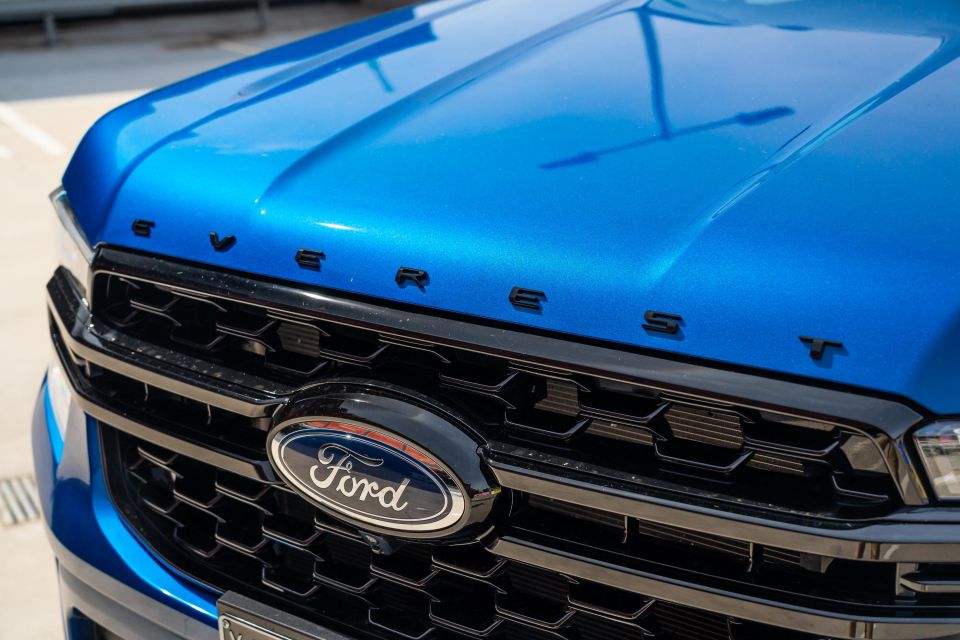
| Servicing and Warranty | Ford Everest Sport V6 |
|---|---|
| Warranty | 5 years, unlimited kilometres |
| Roadside assistance | Up to 7 years – service activated |
| Service intervals | 12 months or 15,000 kilometres |
| Capped-price servicing | Up to 4 years |
| Average annual service cost | $379 |
| Total capped-price service cost | $1516 |
To see how the Ford Everest lines up against the competition, check out our comparison tool
Buy your new car without the stress. It's fast, simple and completely free.

Great service from Travis and team, second time I have used this business would not hesitate to recommend them to anyone
Craig C.
Purchased a Ford Ranger in Sunshine Coast, QLD
CarExpert helped Craig save $7,224 on his Ford Ranger, now let us save you on your next new car.
Get your BEST priceTo answer the question posed in my introduction, yes, the Sport V6 may just be the pick of this runt-less litter. In turn, that probably makes it the pick of the attainable seven-seat off-road SUVs.
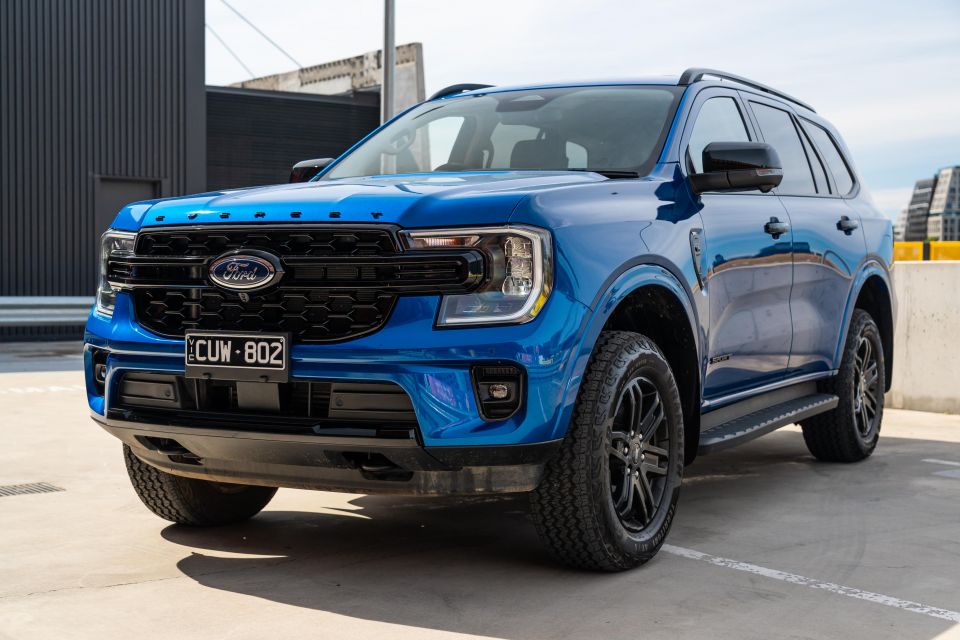
Class-leading turbo-diesel torque and towing capacity? Check. Tough exterior design and a utilitarian interior? Check. A comfortable ride and genuine off-road chops? Check again.
If you’re in the market for an adventure-ready family SUV, you don’t need any more than what the Everest Sport V6 has to offer. The Platinum is a more premium package, but it’s also $7000 dearer, while the cheaper Trend is well-equipped but less appealing without a V6 under the bonnet.
Looking outside the Ford stable, I’m not convinced there’s a better alternative to the Everest. The new-generation Prado is pricey, underpowered and imperfectly packaged, while the Isuzu MU-X is let down by its engine and cabin tech.
So, Australian families should just buy an Everest and call it a day? It’s not quite as simple as that.
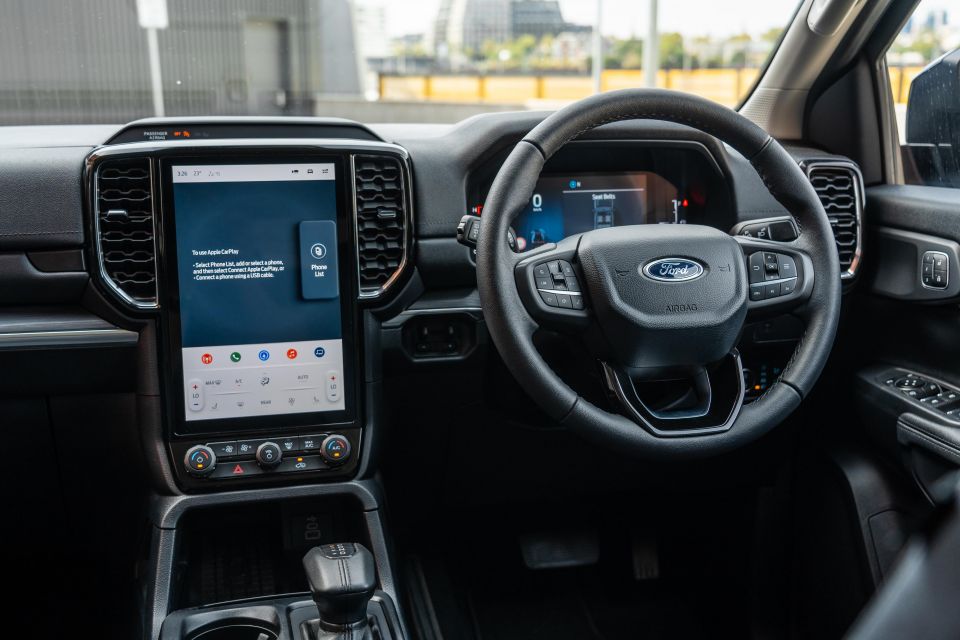
The Everest is aimed at lovers of the great outdoors, not city slickers who spend their time balancing a peak-hour commute with the school run.
Those who fit the latter description should instead consider car-based seven-seaters that prioritise luxury and efficiency over ruggedness. Such options in this price bracket include the Hyundai Palisade, Mazda CX-80, and Kia Sorento.
Interested in buying a Ford Everest? Let CarExpert find you the best deal here
Click the images for the full gallery
Where expert car reviews meet expert car buying – CarExpert gives you trusted advice, personalised service and real savings on your next new car.
Josh Nevett is an automotive journalist covering news and reviews, with a background in motorsport journalism.


William Stopford
16 Hours Ago
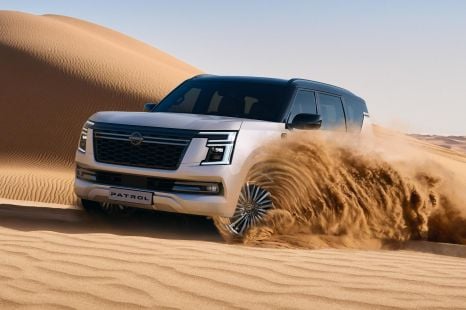

James Wong
3 Days Ago
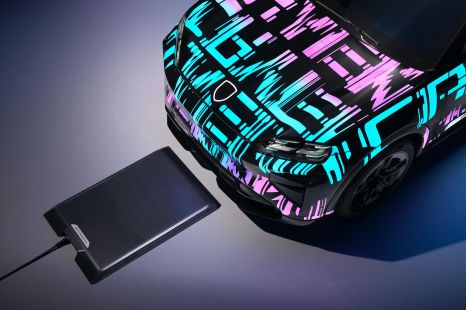

Derek Fung
8 Days Ago
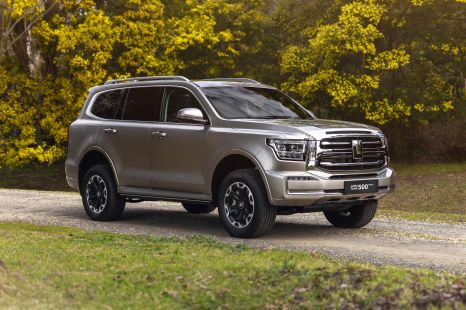

William Stopford
9 Days Ago
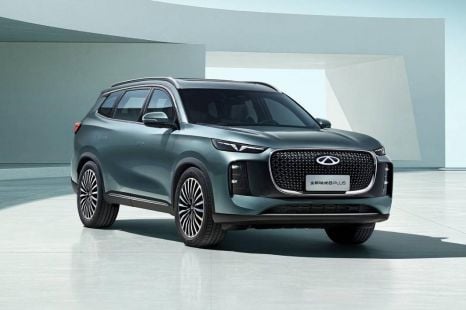

William Stopford
16 Days Ago
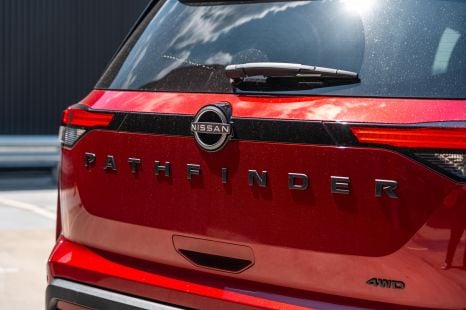

William Stopford
17 Days Ago